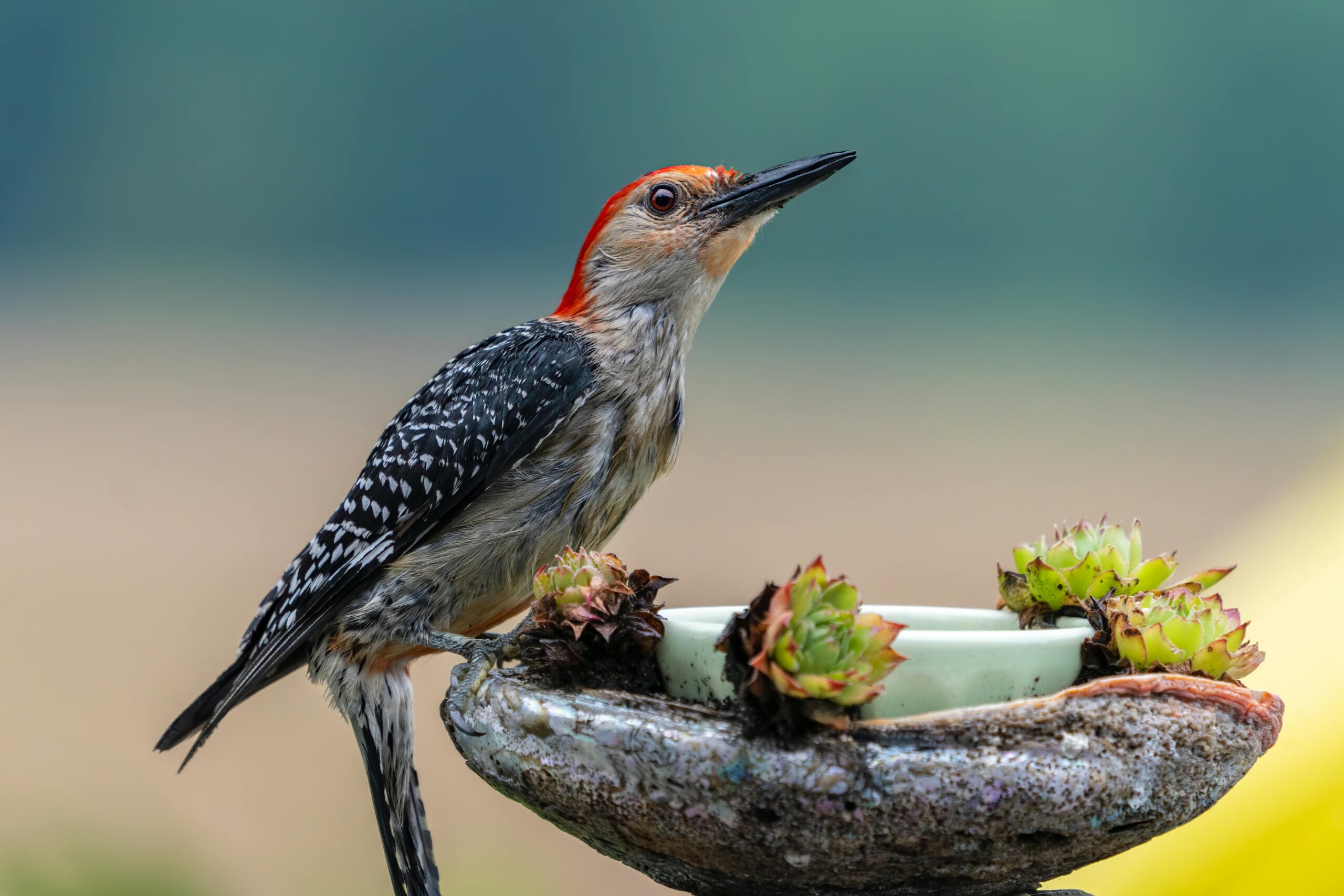Algae build-up in bird baths is a common problem for garden enthusiasts across the UK. While a bird bath adds charm to outdoor spaces and provides essential hydration for birds, the presence of algae not only makes it unsightly but can also pose a health risk to wildlife. Algae thrive in stagnant water, especially under direct sunlight, and can quickly overtake a bird bath if left unchecked. For gardeners looking to create a clean and safe environment for local birds, it’s important to understand both the causes and solutions to algae growth. This article explores practical, eco-friendly, and UK-specific strategies to prevent algae, maintain hygiene, and keep your bird bath attractive year-round. Whether you’re an experienced gardener or new to wildlife care, these tips will help you make the most of your outdoor feature without relying on harsh chemicals.
Common Causes of Algae in Bird Baths
Algae are simple, plant-like organisms that thrive in moist, sunlit environments, making bird baths an ideal habitat. In UK gardens, algae growth is especially common due to the country’s mix of mild temperatures and frequent rainfall, which often leads to standing water conditions. Several common factors contribute to the development of algae in bird baths:
- Direct Sunlight Exposure: Sunlight fuels photosynthesis, encouraging rapid algae growth in water features left in open, sunny spots.
- Stagnant Water: Still water provides the perfect breeding ground for algae. Without regular cleaning or water flow, algae can multiply quickly.
- Organic Debris: Leaves, dirt, bird droppings, and pollen that accumulate in the bath serve as nutrients, feeding algae blooms.
- Lack of Regular Maintenance: Infrequent cleaning allows biofilm and algae spores to settle and establish a slimy, green layer.
Understanding these triggers is the first step toward prevention and cleaner garden habitats.
Understanding Why Algae Thrives in Outdoor Water Features
To prevent algae effectively, it’s essential to grasp the environmental conditions that allow it to flourish. Algae spores are naturally present in the air and water. Once they land in a bird bath, certain conditions can cause them to grow rapidly:
- Nutrient-Rich Water: Debris such as fallen leaves and feathers introduces nitrogen and phosphorus, which are essential nutrients for algae.
- Warm Temperatures: Even in the UK’s relatively cool climate, brief periods of sunshine in spring and summer can raise water temperature enough to accelerate growth.
- Low Water Circulation: Unlike ponds with filtration systems, bird baths usually have static water, making them vulnerable to colonisation by algae.
By recognising these growth factors, gardeners can proactively minimise algae risk using appropriate placement, routine cleaning, and natural deterrents.
Best Prevention Methods to Keep Algae Away
Preventing algae in a bird bath is far more efficient than dealing with an established outbreak. UK gardeners can rely on simple, proactive methods to keep water clean and inviting without harming the birds or the environment. Here are some of the most effective prevention strategies:
- Position the Bird Bath in Shade: Placing the bird bath in a shaded area reduces direct sunlight and slows down algae photosynthesis.
- Empty and Refill Frequently: Refreshing the water every day or two prevents stagnation and limits the nutrients algae feed on.
- Use a Water Agitator or Fountain: Adding movement discourages algae growth, which prefers still water.
- Introduce Algae-Resistant Materials: Concrete or stone bird baths tend to resist algae better than plastic or resin models.
These low-effort strategies support a healthier, more attractive water source for visiting birds while extending the life of your bird bath.
Natural and Eco-Friendly Solutions for Daily Maintenance
Maintaining a bird bath without using chemicals is not only safer for birds but also better for the local environment. Here are a few sustainable options UK gardeners can use for daily care:
- Baking Soda Scrub: A mild paste of baking soda and water works well to scrub away algae stains during regular cleanings.
- White Vinegar Rinse: A 1:9 solution of white vinegar to water effectively kills algae without leaving harmful residues.
- Copper Coins or Tubing: Copper has natural anti-algae properties. Placing a few old copper coins or a short piece of copper pipe in the basin can inhibit growth.
- Manual Debris Removal: Use a soft brush or sponge daily to remove feathers, leaves, and droppings.
These methods allow for easy, chemical-free maintenance while preserving a safe and healthy bird habitat.
How to Clean a Bird Bath Safely and Effectively
Regular cleaning is key to preventing algae buildup and ensuring birds have access to fresh, safe water. In UK gardens where damp weather encourages organic matter to collect, a consistent cleaning schedule is essential. Ideally, bird baths should be cleaned at least once a week—more often during warm or rainy seasons.
Here’s what makes a cleaning routine both safe and effective:
- Avoid Harsh Chemicals: Bleach or detergents can be harmful to birds and are not recommended for routine cleaning.
- Stick to Natural Agents: Use simple household items like vinegar or baking soda for an eco-conscious approach.
- Use Soft Brushes: Avoid abrasive tools that may scratch the surface and make it easier for algae to attach.
- Rinse Thoroughly: Always rinse well after cleaning to ensure no residue remains that could harm birds.
Consistency is the most important part of a safe cleaning strategy.
Step-by-Step Cleaning Guide Using Household Items
Here’s a straightforward method for cleaning your bird bath using safe, easily available materials:
- Empty the Bath: Pour out all water and remove any solid debris like leaves or droppings.
- Prepare a Cleaning Solution: Mix one part white vinegar with nine parts water in a bucket.
- Scrub the Surface: Use a soft-bristle brush or sponge to clean the bowl, sides, and any decorative features.
- Rinse Thoroughly: Rinse the bird bath several times with clean water to remove all traces of vinegar.
- Dry and Refill: Let the surface air dry, or towel it dry before refilling with fresh, cool water.
Choosing the Right Bird Bath to Prevent Algae
The design and material of a bird bath can significantly influence how prone it is to algae growth. UK gardeners aiming to minimise maintenance should consider these aspects when selecting or replacing a bird bath:
- Material Matters: Natural stone and glazed ceramic are more algae-resistant than plastic or porous concrete, which can absorb water and trap organic residue.
- Shallow Designs Are Better: A shallow basin (no more than 5 cm deep) allows for easy water changes and discourages algae by reducing stagnant zones.
- Smooth Interior Surface: A smooth finish prevents algae from easily latching on and makes scrubbing more effective.
- Drainage Options: Some bird baths come with built-in drains or removable basins, simplifying cleaning and water replacement.
Choosing wisely from the outset can reduce the frequency of algae problems and make ongoing care far more manageable.
Materials and Design Features That Reduce Algae Growth
When shopping for or evaluating your current bird bath, consider the following design elements that help combat algae growth:
- Glazed Ceramic: The non-porous surface makes it hard for algae to adhere and simplifies cleaning.
- Dark-Coloured Basins: These absorb heat, which might seem counterintuitive, but they can make water slightly less hospitable to algae in cooler UK climates.
- Textured Exterior, Smooth Interior: A bird bath with a decorative exterior and smooth interior strikes a good balance between aesthetics and practicality.
- Raised or Pedestal Style: Elevating the bath off the ground reduces contamination from soil and fallen debris, which contributes to algae development.
With thoughtful selection, gardeners can enjoy a functional, low-maintenance water source that enhances the space while supporting bird life.
Seasonal Tips to Maintain a Healthy Bird Bath
UK weather varies greatly across the seasons, and adapting bird bath maintenance accordingly is essential to prevent algae while ensuring a reliable water source for birds. Each season presents unique challenges, and a year-round care approach helps maintain hygiene and functionality.
Here are seasonal maintenance tips:
- Spring: This is prime algae season. Begin frequent cleanings as temperatures rise and wildlife activity increases.
- Summer: Evaporation is high, and algae thrive. Refill daily with fresh water and place the bath in shade when possible.
- Autumn: Falling leaves and organic debris can quickly accumulate. Check and clean regularly to prevent clogging and nutrient build-up.
- Winter: While algae growth slows, freezing conditions can damage bird baths. Use frost-resistant materials or add a bird-safe water heater.
Being aware of seasonal needs helps ensure your bird bath remains clean, safe, and inviting all year long.
Adjusting Bird Bath Care for Winter and Summer Months
The extremes of summer and winter require special attention to protect both the bird bath and the wildlife it serves:
In Summer:
- Shade Placement: Move the bird bath under a tree or garden umbrella to limit sunlight exposure.
- Daily Refills: Replenish with cool, clean water to reduce algae and support hydration.
- Algae Monitoring: Inspect for slime buildup more frequently and clean as needed.
In Winter:
- Use Frost-Proof Baths: Stone, concrete, or specially treated resin models resist cracking in cold weather.
- Avoid Salts or Chemicals: Never add substances to prevent freezing, as they can be toxic to birds.
- Break Ice Gently: Use warm (not hot) water to melt surface ice, or install a bird-friendly heater.
With a few adjustments each season, your bird bath will stay in top condition while offering birds a safe refuge all year round.
Keeping Your Bird Bath Clean Year-Round
Maintaining a bird bath free of algae is not only about aesthetics—it plays a vital role in supporting garden wildlife health. By understanding the causes of algae growth and implementing preventive steps, UK gardeners can enjoy a cleaner, more inviting bird bath throughout the seasons. From selecting algae-resistant materials and ideal placement to establishing regular cleaning routines using eco-friendly solutions, there are numerous effective strategies that require minimal effort and no harmful chemicals.
Seasonal adjustments ensure your bird bath remains functional despite the UK’s fluctuating climate. Whether it’s shielding the basin from summer sun or protecting it during winter frosts, proactive care extends the life of your bird bath while keeping it safe and hygienic for birds.
Ultimately, a clean bird bath reflects a well-tended garden and creates a welcoming habitat for local wildlife—a small effort with a big environmental reward.
FAQs
How often should I clean my bird bath to prevent algae?
Answer: It’s best to clean your bird bath at least once a week, or more often during warm, sunny periods when algae grow faster.
Can I use bleach or chemicals to clean a bird bath?
Answer: Avoid using bleach or harsh chemicals, as they can be harmful to birds. Use white vinegar or baking soda instead.
Will placing my bird bath in the shade help reduce algae?
Answer: Yes, placing the bath in a shaded area limits sunlight exposure, which significantly slows algae growth.
Are certain materials better at resisting algae buildup?
Answer: Glazed ceramic and smooth stone materials are more resistant to algae compared to plastic or unsealed concrete.
What can I add to the water to prevent algae naturally?
Answer: A few old copper coins or a small piece of copper pipe can help inhibit algae growth safely and naturally.

